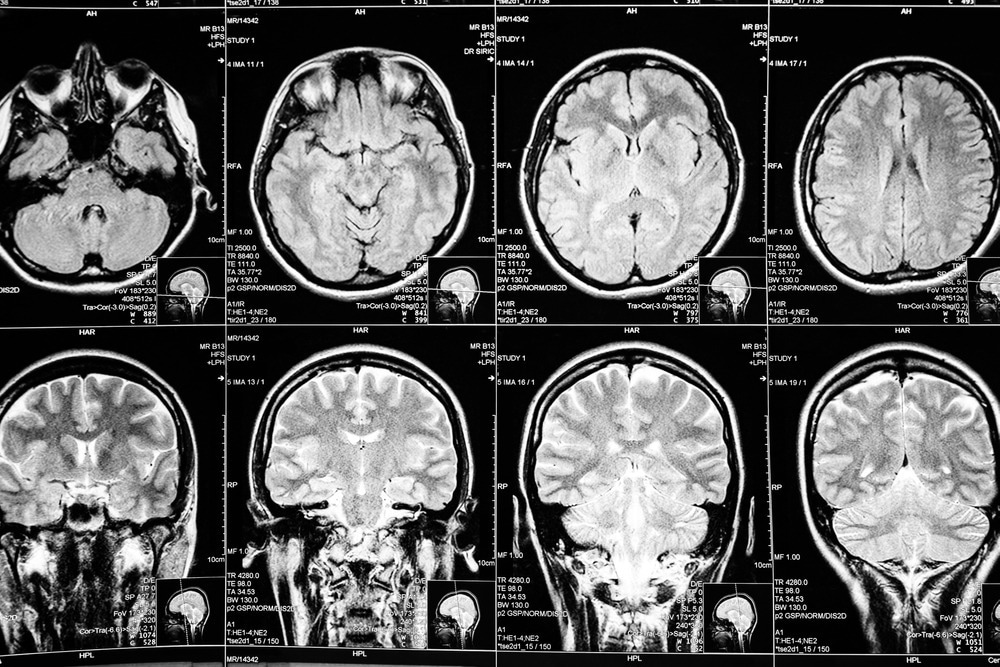The severe acute respiratory syndrome coronavirus 2 (SARS-CoV-2), the pathogen responsible for the coronavirus disease 2019 (COVID-19), has infected over 550 million and caused over 6.3 million deaths worldwide.

Study: Altered brain regional homogeneity is associated with depressive symptoms in COVID-19. Image Credit: Stivog / Shutterstock.com
Background
Some of the common symptoms associated with COVID-19 include fever, weakness, cough, dyspnea, fatigue, diarrhea, vomiting, hypogeusia, and hyposmia. Although most COVID-19 patients will experience mild symptoms, about 15% will experience severe disease and 5% will experience life-threatening conditions.
Along with clinical symptoms, several neuropsychiatric symptoms have also been reported in COVID-19 patients. In fact, several meta-analyses have highlighted that these patients are more likely to develop acute neuropathies, depression, sleep disorders, anxiety, encephalitis, chronic fatigue, stress-related disorders, and stroke.
Researchers have hypothesized that the cognitive and psychiatric symptoms associated with COVID-19 may be due to the neural effects of this infection or its treatments. However, these symptoms may also develop due to concerns of getting infected, social isolation, lifestyle changes, and worsened living conditions. Although these factors will typically occur during the acute phase of the infection, they may also persist for several months post-recovery.
Recent advances in neuroimaging literature have allowed researchers to study COVID-19-related structural brain alterations. Magnetic resonance imaging (MRI), for example, has highlighted abnormalities in the medio-temporal lobe, as well as the detection of white matter microhemorrhages, in COVID-19 patients.
Another study involving participants of the United Kingdom Biobank (UKB) reported a significant reduction of gray matter thickness in the orbitofrontal cortex, along with the parahippocampal gyrus. A global reduction in brain size has also been observed in COVID-19 patients as compared to healthy controls.
Additionally, positron emission tomography (PET) hypometabolism within the olfactory gyrus, its connected limbic/paralimbic regions, as well as the right thalamus and right parahippocampal gyrus, has also been reported in COVID-19 patients. Despite the numerous reported brain abnormalities, only one study utilizing resting-state functional MRIs (rs-fMRI) has been conducted on COVID-19 patients.
A new Journal of Affective Disorders study used regional homogeneity (ReHo) to identify brain abnormalities in patients who recovered from COVID-19 without any major psychiatric and neurological symptoms. The current study involved three hypotheses, the first of which hypothesized that COVID-19 patients would show greater anxiety, depressive symptoms, and fatigue as compared to HC.
Furthermore, the researchers hypothesized that COVID-19 would exhibit regional homogeneity alterations in the areas of the brain associated with these conditions and that their psychopathological symptoms would be associated with regional functional connectivity alterations.
About the study
The current study included a total of 85 COVID-19 patients and 17 healthy controls. COVID-19 patients were included in the study only if they had a positive SARS-CoV-2 molecular swab test. Patients who had a previous diagnosis of neurological disorders, as well as those currently receiving psychopharmacological treatments, were excluded from the study.
MRI scans were obtained within nine months of the positive SARS-CoV-2 test, followed by image processing. Regional homogeneity (ReHo) analysis was carried out to determine local brain abnormalities when the brain is at rest.
Anxiety symptoms, depressive symptoms, and fatigue were assessed clinically using the seven-item General Anxiety Disorder Scale (GAD-7), the Patient Health Questionnaire (PHQ-9), and the Multi dimension Fatigue Inventory (MFI) respectively.
Study findings
Most of the patients reported five symptoms during the acute phase of their infection, with the most common symptoms being fatigue, fever, headache, muscle pain, and cough. A total of 28 patients were hospitalized and 44 reported persistent symptoms during their MRI scan.
COVID-19 patients had higher PHQ-9 scores as compared to healthy controls, while no difference was observed in GAD-7 and MFI scores between the two groups. COVID-19 patients also exhibited higher ReHo in the right hippocampus and reduced ReHo in the right superior/middle temporal gyrus, left angular gyrus, as well as the left inferior temporal gyrus. No difference in ReHo values between COVID-19 patients with and without fever was observed.
A negative correlation was observed between PHQ-9 scores and ReHo in the left angular gyrus. Comparatively, a positive correlation was observed between PHQ-9 scores and ReHo in the right hippocampus.
Conclusions
The current study demonstrated that abnormal local functional connectivity observed in the parieto-temporal regions of COVID-19 patient brains can lead to depressive symptoms. This observation can be used to assist in the development of specific therapeutic strategies against psychopathological symptoms that would improve the overall quality of life for COVID-19 patients. Further research on a more homogenous and larger population is required to confirm these findings.
Limitations
The study has certain limitations. First, the duration between the first positive SARS-CoV-2 test and the acquirement of the MRI scan varied significantly. Second, COVID-19 patients displayed heterogeneity of symptoms.
Third, the findings of the current study cannot be generalized due to its cross-sectional nature. Finally, the retrospective assessment of psychopathological symptoms might lead to recall bias.